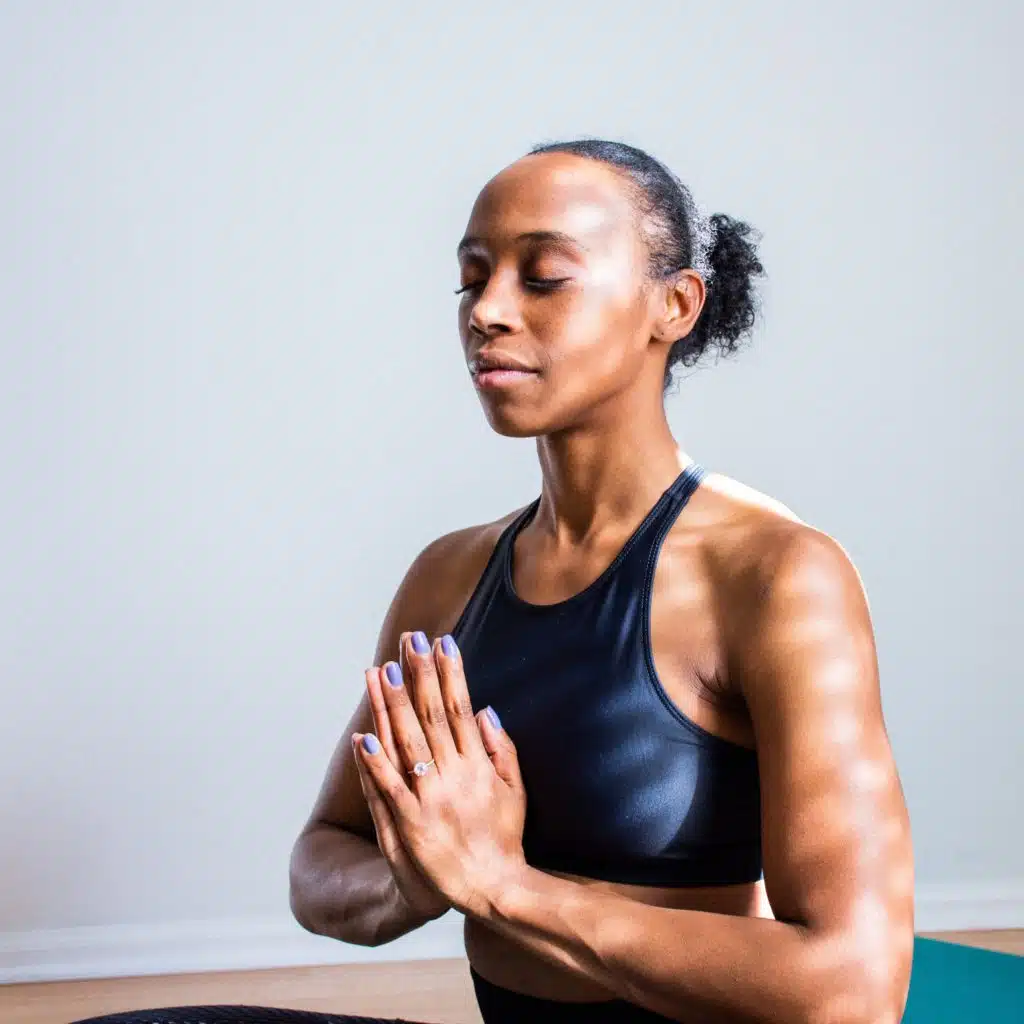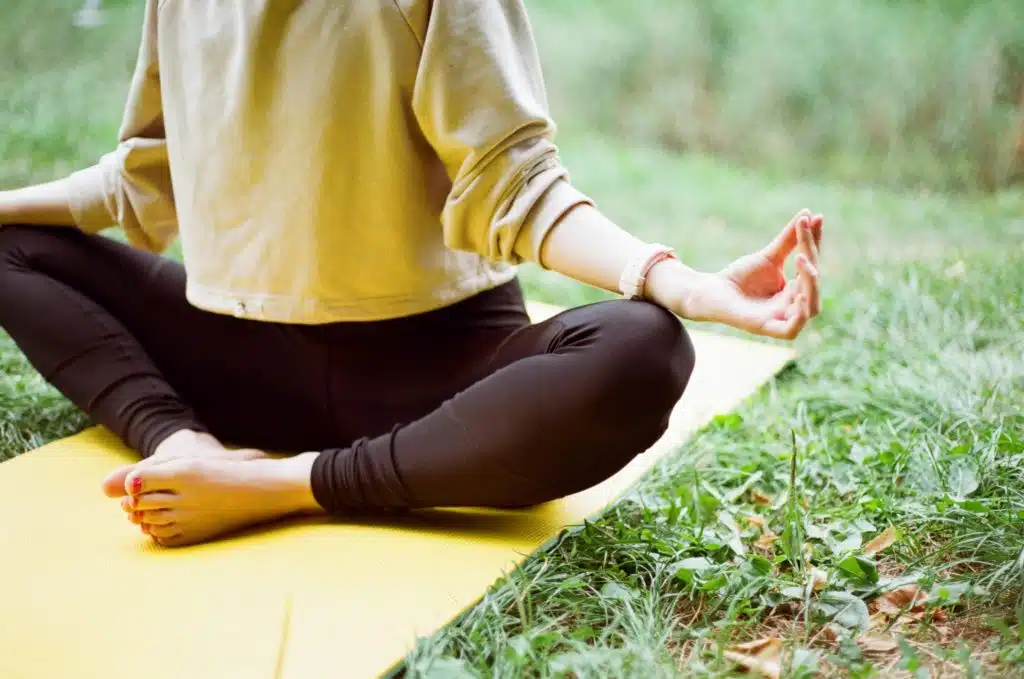Social media posts make burnout seem so simple. As if a few well-placed boundaries, a weekend off, and a couple of bubble baths will help us bounce back from burnout in the blink of an eye. Don’t get us wrong, these things are important, but if you’re in deep burnout, it’s going to take a lot more than that to regulate your nervous system and bring back your motivation, your health, and your zest for life.
If you’re an A-type, working mom, people-pleasing, perfectionist, you’re probably all too familiar with the struggles of burnout. But rest assured, whether you’re already at rock bottom or worried you might end up there, with the right approach you can get better and safeguard your health and happiness.
What Is Burnout?
Burnout affects millions of Americans and particularly women and women of color. It is caused by either an overload or a lack of challenge or clarity in one’s life and is typically characterized by a lack of motivation, feelings of exhaustion, and negativity towards one’s job and other people. This is most often brought on by our work life but it can also be the result of other areas such as parenting or study.
No one wants to hit burnout, it can take a huge toll on both short-term and long-term health. But do you need to implement prevention to safeguard against it, or recovery to shift you out of it?
Take our QUIZ to find out which you need now.

Burnout Prevention
If you are careful to listen to your body and its needs, and practice self care often, you probably don’t need recovery yet. Nonetheless, incorporating some new rituals and habits to help you manage your emotions and care for your mind and body is excellent prevention and is bound to help you feel relaxed, motivated, and resilient.
As you probably know however, self-care is more than just facemasks and staying home. Any healthy habits that contribute to the different areas of your Wheel of Life are extremely beneficial for your wellbeing.
Some examples include:
- Journaling
- Daily movement
- Healthy boundaries
- Healthy eating
- Breathwork
- Socializing
- Creative outlets
- Daily sunshine
- Gut and liver support
Learning to make these beautiful practices a part of your daily routine will help with alignment and balance. As such, it’s important to prioritize doing something each day that relieves stress and feeds your soul instead of draining you. With all this in mind, you should hopefully never reach full burnout and you should be able to bounce back easily from setbacks.

Burnout Recovery
If your anxiety is through the roof, your thyroid is malfunctioning, you’re gaining weight for no reason, you’re easily annoyed, and it feels like everything in your life is an out of control, hot mess, it’s time to start your burnout recovery plan, stat.
Like a bank account, our resilience to stress is based on how many deposits we make versus how many withdrawals we take out. Too many withdrawals and we start to “overdraw” on our account — and this always comes with a steep fee!
We often need to cut back on withdrawals and make consistent deposits for some time to correct the situation. This is the difference between Burnout Prevention and Burnout Recovery. Prevention is self-care, yoga classes, pumpkin spice lattes, alone time, and occasional treats, which let’s be honest, we all deserve.
On the other hand, after too many withdrawals and not enough deposits, we’re left completely depleted. This is where Burnout Recovery needs to happen. Unwinding your nervous system and creating safety are your priorities in Recovery. When we’re deep in burnout, it means we’ve exhausted our internal resources and therefore, doing a whole host of new activities only keeps us in the burnout cycle.
So where do we start when trying to implement a burnout recovery plan? We have the ANSWER:
- Awareness: We must become aware that we are in burnout and actively discover what our individual triggers are.
- New thinking: By interrupting existing thought patterns and habits, we can start to build new neural networks, or “new thinking.” This is also referred to as brain re-training!
- Safety: Your nervous system is in overdrive from the constant stress hormones that are flooding your brain and body. By focusing on creating safety and parameters, you can start to make changes that stick.
- W’s: what, when, where, why, who. When a trigger does come up, evaluate the 5 W’s: What happened? When did this happen? Where was I? Why did this happen? Who was there?
- Elimination
- Reintroduction / Replacement

Stay away from meditating, breathwork, and gratitude journaling until you start to relieve some pressure. Once you’re in a place where you are more balanced, you can begin to incorporate these modalities into your daily routine.
Instead you can try:
- Rage Journaling
- Daily movement
- Daily sunshine
- Creating promises with yourself and keeping them (I will go to bed at the same time every night. I will exercise three times a week. I will take 15 minutes for myself after mealtime to rest and digest.) This is the bridge to creating boundaries with others.
- Healthy eating
- Socializing
- Creative outlets
- Gut and liver support
Our bodies hold our stress for us, but it stacks up. And with daily toxin exposures in our food, air, and water, our bodies are just not as resilient to withstand stress as they used to be.
Here’s the good news – it’s still entirely possible to release the stress you’ve been holding in your body, gently and systematically. Nervous system regulation is the most important factor for your recovery plan. You can implement supportive practices in your life to minimize the impact of daily and chronic stressors. While it’s simple, it’s not always easy in this state, therefore, creating a plan to put yourself first is imperative.
If you’re ready to start prioritizing yourself and building habits for a healthier you, we invite you to try out our free 7-Day trial in the Your Daily™ Reset app — we’d love to see you benefit from it!
The Your Daily™ method looks at what’s lacking and helps you create one targeted keystone habit that has a halo effect on the rest of your life and health. We work on this behavior until it becomes ritual, and only then do we work on adding in a new habit. While it’s tempting to try to do more at once because it’s “efficient,” we urge you to keep it streamlined and focused. So give it a go and let us know what you think.
Your journey from dealing to healing begins with small daily steps.





